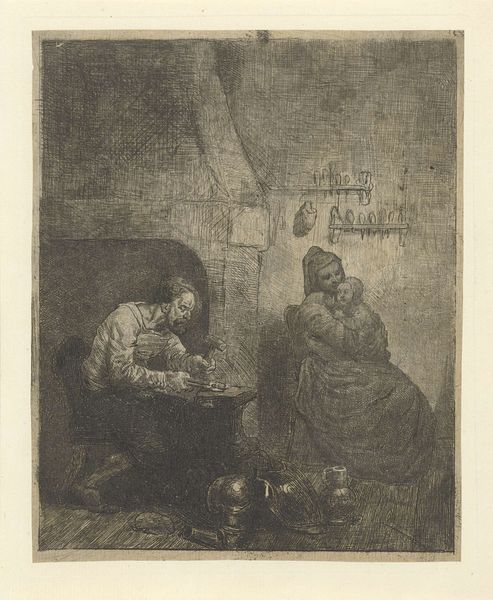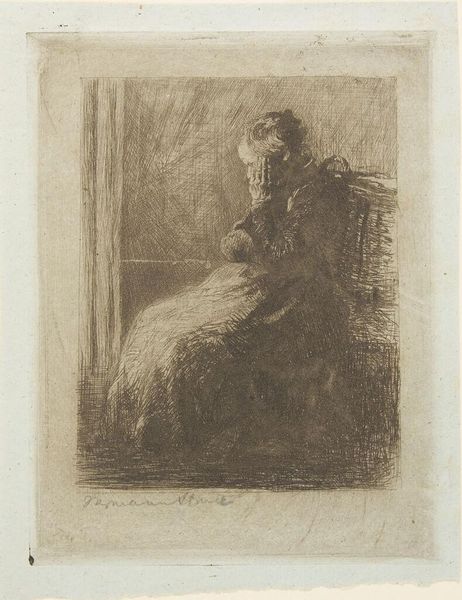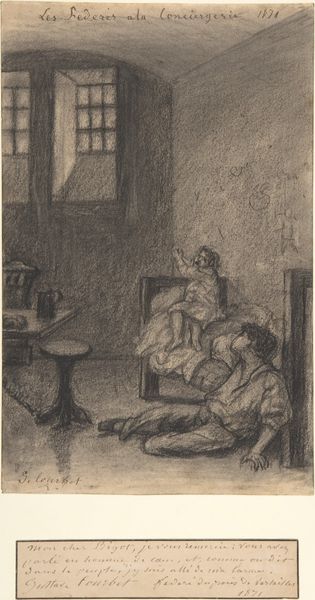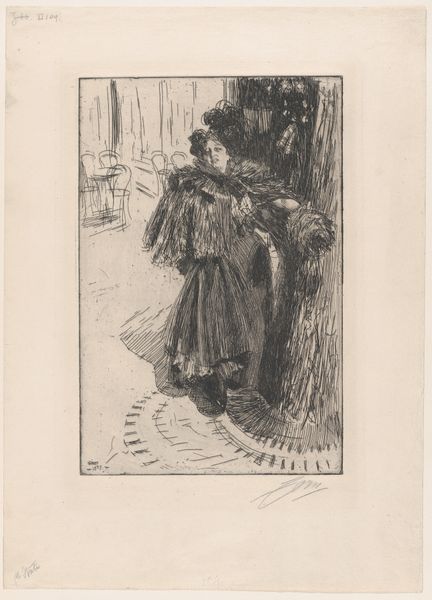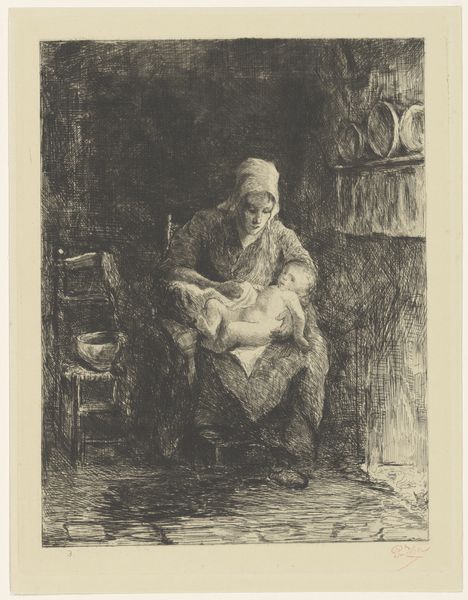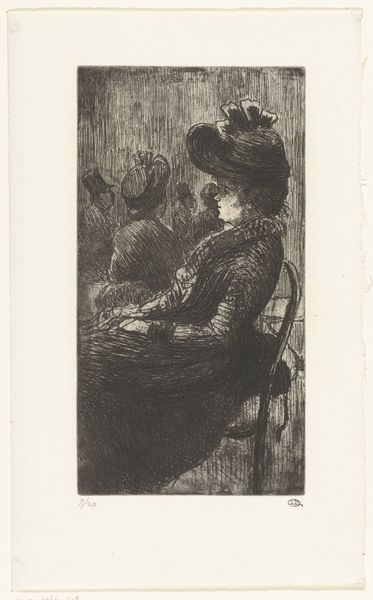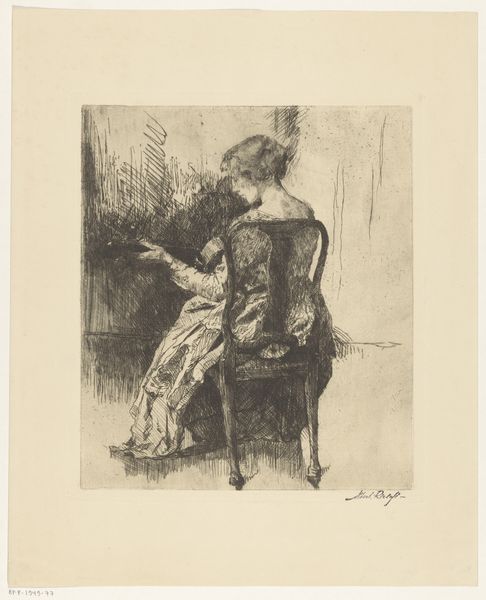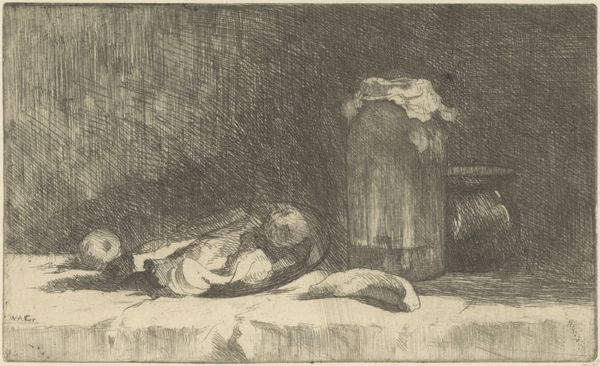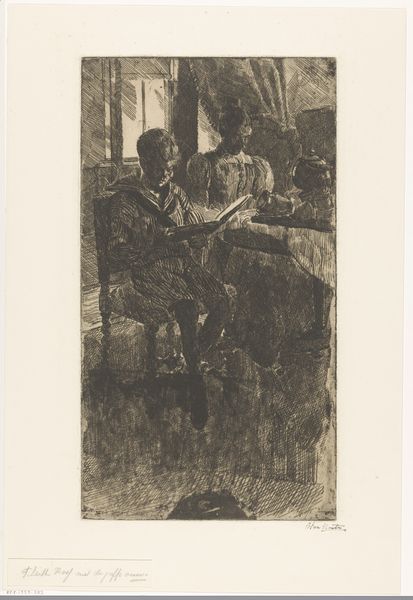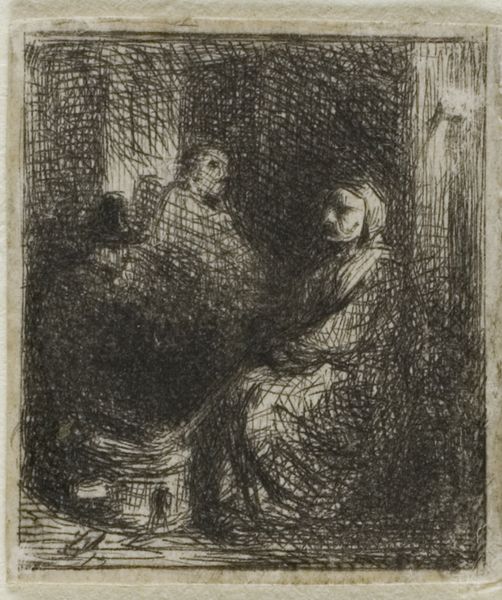
Vrouw met slapend kind op schoot zit bij raam in een interieur 1855 - 1892
0:00
0:00
etching
#
portrait
#
etching
#
pencil drawing
#
genre-painting
#
realism
Dimensions: height 168 mm, width 147 mm
Copyright: Rijks Museum: Open Domain
Editor: This is “Vrouw met slapend kind op schoot zit bij raam in een interieur” an etching by Bernardus Johannes Blommers, created sometime between 1855 and 1892. It's housed at the Rijksmuseum. The etching is primarily grayscale and displays an interior with a woman cradling a sleeping child by a window. The scene is intimate and, although somber, somewhat tranquil. What symbols or deeper meanings do you observe in it? Curator: The intimacy, certainly. Notice the pose: a Madonna-like image echoed across centuries. The woman's posture, the child's vulnerable sleep... they evoke tenderness. Consider how the window filters light, a symbol of hope, yes, but also limitation. It frames their world. How might that speak to the role of women during this period? Were their lives as circumscribed as this small, domestic interior suggests? Editor: That’s interesting. I didn't initially consider the societal implications. So, you're saying the image, while seemingly simple, subtly points to the constraints faced by women, reflected in this enclosed, personal space? Curator: Precisely. Etchings like this often aimed to portray "realistic" scenes, but realism always carries an agenda. This work seems to capture a kind of universal image about the human, a shared and easily understood language, but it is specific, of its time and the culture. The symbols are inherited but also created. Editor: It really emphasizes how much context matters. Thanks for highlighting those underlying details. I never would have noticed the references on my own! Curator: The pleasure was mine. Now, armed with this new way of observing, what other 'hidden' symbols might you look for in other works? It’s an exciting pursuit.
Comments
No comments
Be the first to comment and join the conversation on the ultimate creative platform.
